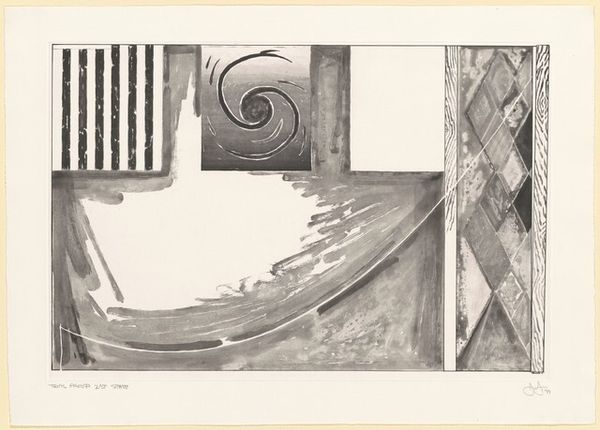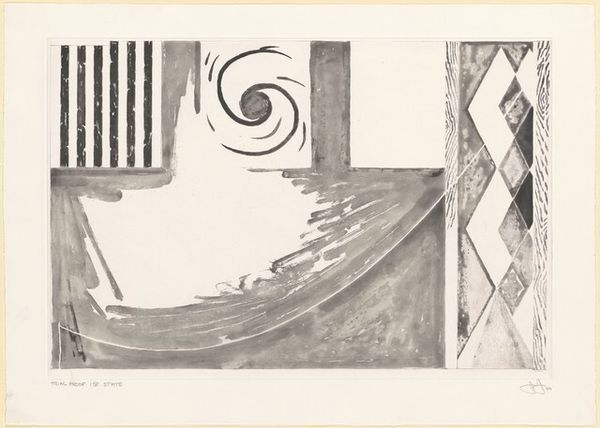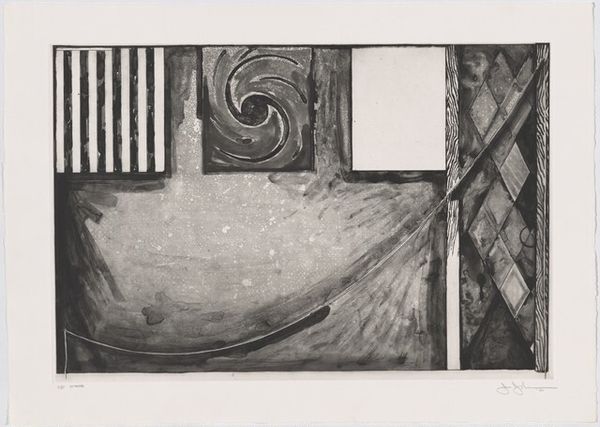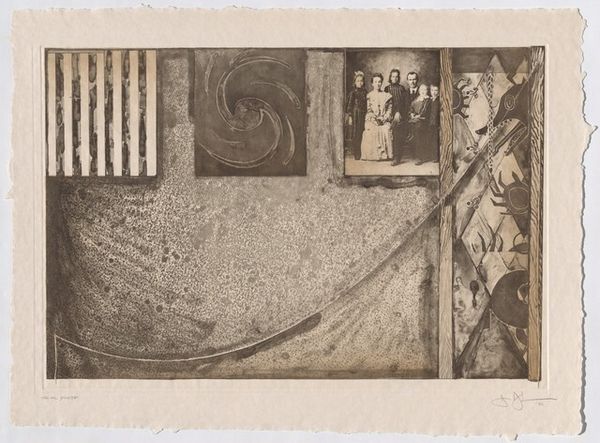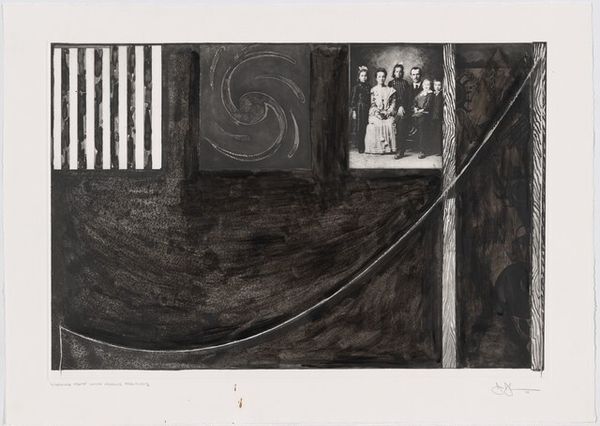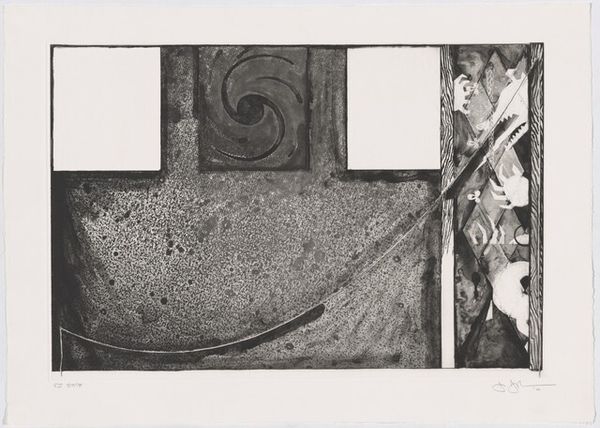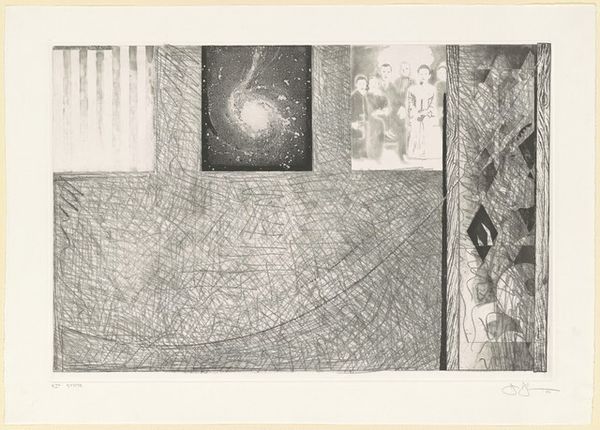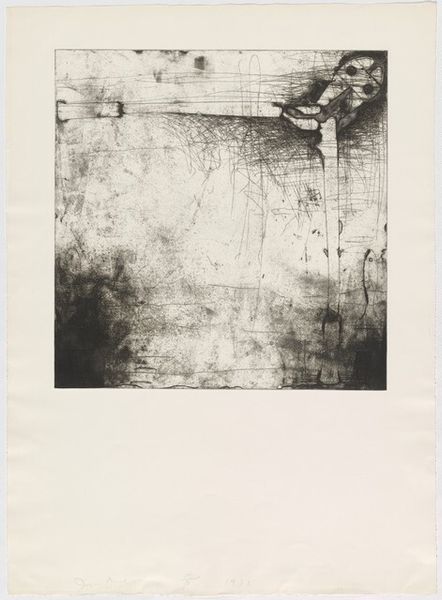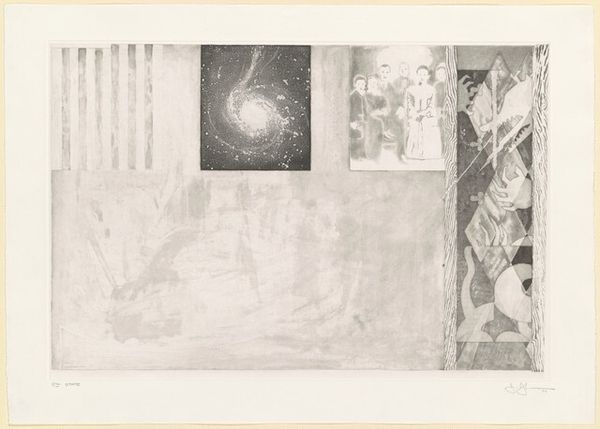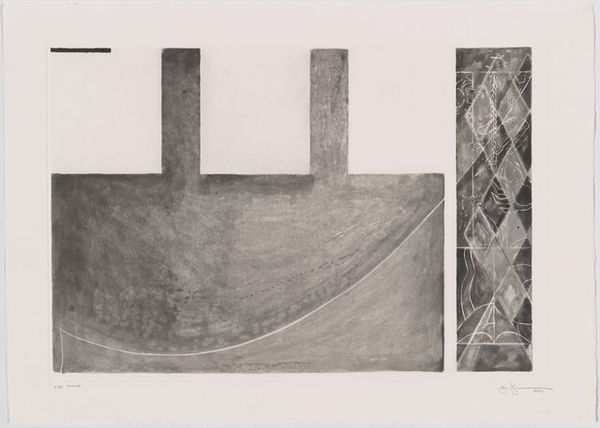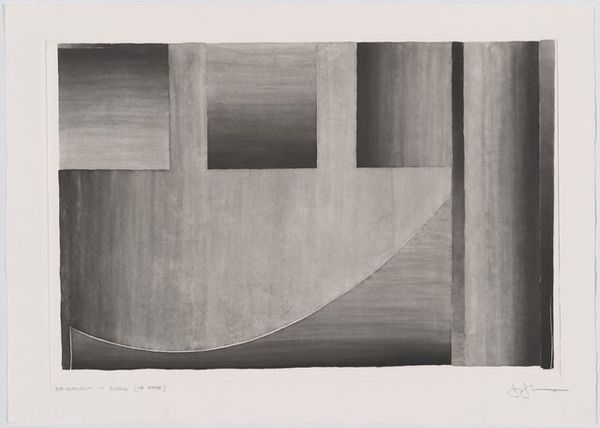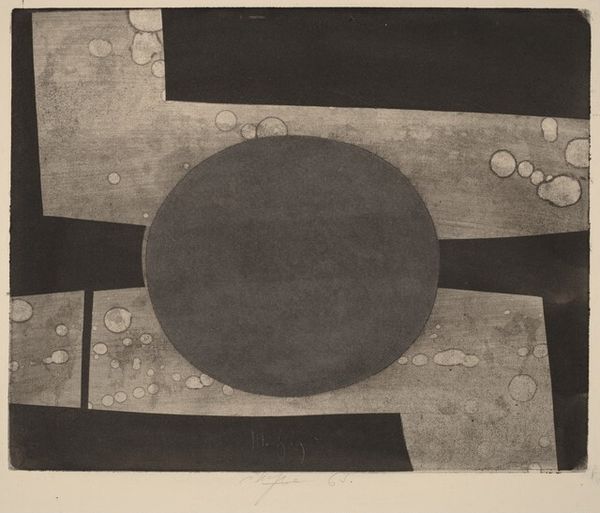![Untitled (Embassies) [trial proof 2nd state] by Jasper Johns](/_next/image?url=https%3A%2F%2Fd2w8kbdekdi1gv.cloudfront.net%2FeyJidWNrZXQiOiAiYXJ0ZXJhLWltYWdlcy1idWNrZXQiLCAia2V5IjogImFydHdvcmtzL2ZlYzIwNzk5LTI0M2QtNDc1NS1iZDE1LTQ4OGY2OGYxYTExMC9mZWMyMDc5OS0yNDNkLTQ3NTUtYmQxNS00ODhmNjhmMWExMTBfZnVsbC5qcGciLCAiZWRpdHMiOiB7InJlc2l6ZSI6IHsid2lkdGgiOiAxOTIwLCAiaGVpZ2h0IjogMTkyMCwgImZpdCI6ICJpbnNpZGUifX19&w=1920&q=75)
#
neo-dada
Dimensions: plate: 46.36 x 68.58 cm (18 1/4 x 27 in.) sheet: 56.52 x 78.74 cm (22 1/4 x 31 in.)
Copyright: National Gallery of Art: CC0 1.0
Editor: Jasper Johns’ "Untitled (Embassies) [trial proof 2nd state]" from 1999 is a captivating mixed-media print, it's got all these geometric sections in monochromatic tones. I find the composition somewhat puzzling, what strikes you when you look at this work? Curator: What strikes me is how Johns, as always, prompts us to consider the 'making' of art itself. It's a 'trial proof', which invites a peek into the studio. Think about printmaking: a fundamentally reproductive medium, but here, Johns presents a stage of material experimentation, laid bare. Consider the textures, how they're built through varied processes. Is it "high art", or just process? What makes it an artwork? Editor: So, the fact that it’s a 'trial proof' challenges traditional notions of a finished piece? How does the material process contribute to the overall meaning? Curator: Absolutely. We have to consider the cultural status afforded to "finished" versus "unfinished". Here, we witness Johns manipulating materials, the means of production exposed. Look at the contrasting sections: stripes, a swirling cosmos, geometric patterns. It prompts us to think about the means of production. The labor, materiality, and even the idea of artistic consumption become integral to its impact. It becomes an examination of the artistic creation itself. Editor: That's fascinating! So instead of focusing solely on the image, we’re prompted to consider the labor and choices behind the print-making process? It sounds like Johns invites the viewer to appreciate the craftsmanship and material decisions just as much as the final composition. Curator: Precisely. By making the artistic process visible, Johns elevates the importance of material production, inviting viewers to reconsider established hierarchies and reflect on art’s broader cultural significance. It shifts focus from pure aesthetics to production, inviting critical inquiry. Editor: I hadn’t considered it that way, it definitely changes how I see this print, thank you!
Comments
No comments
Be the first to comment and join the conversation on the ultimate creative platform.
